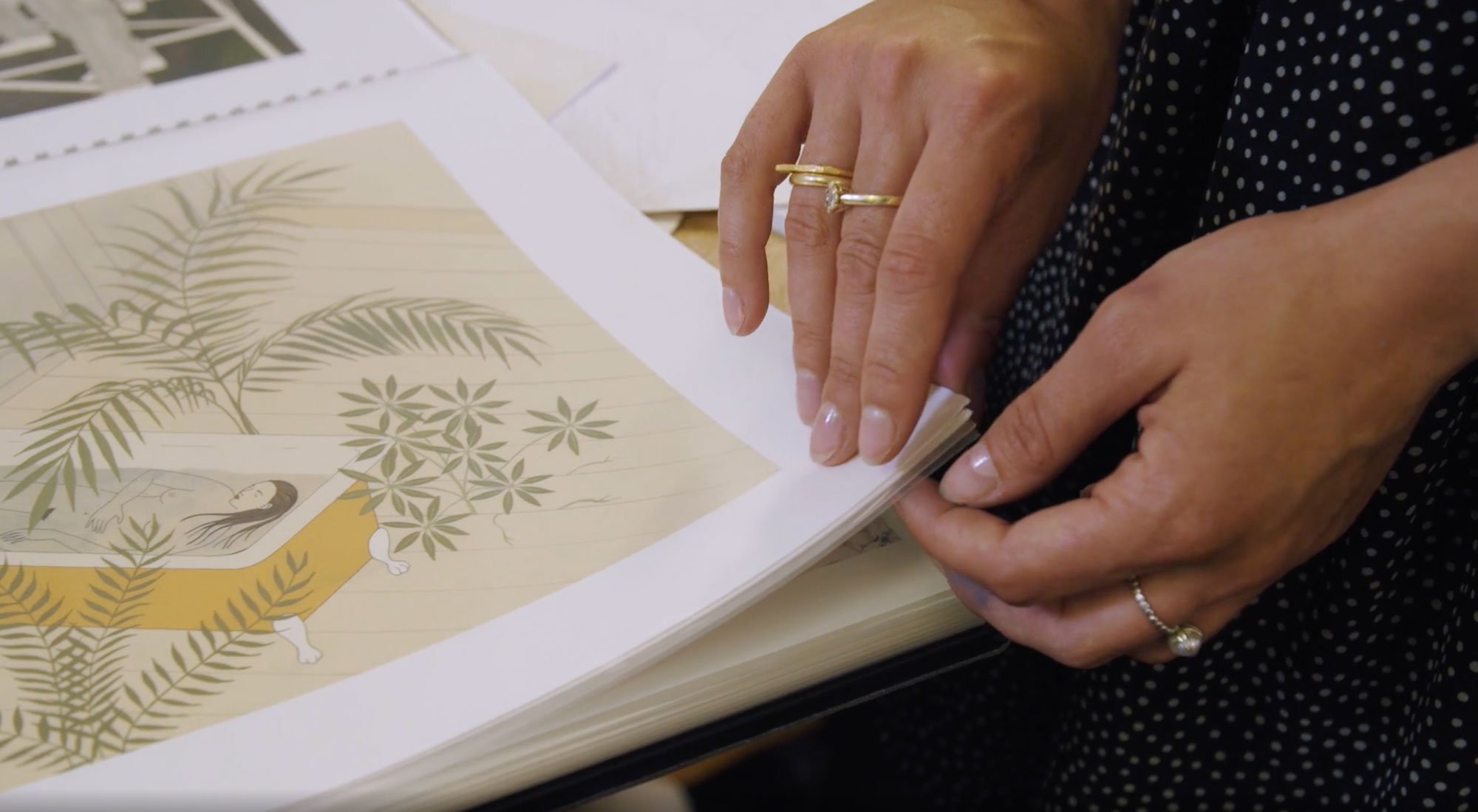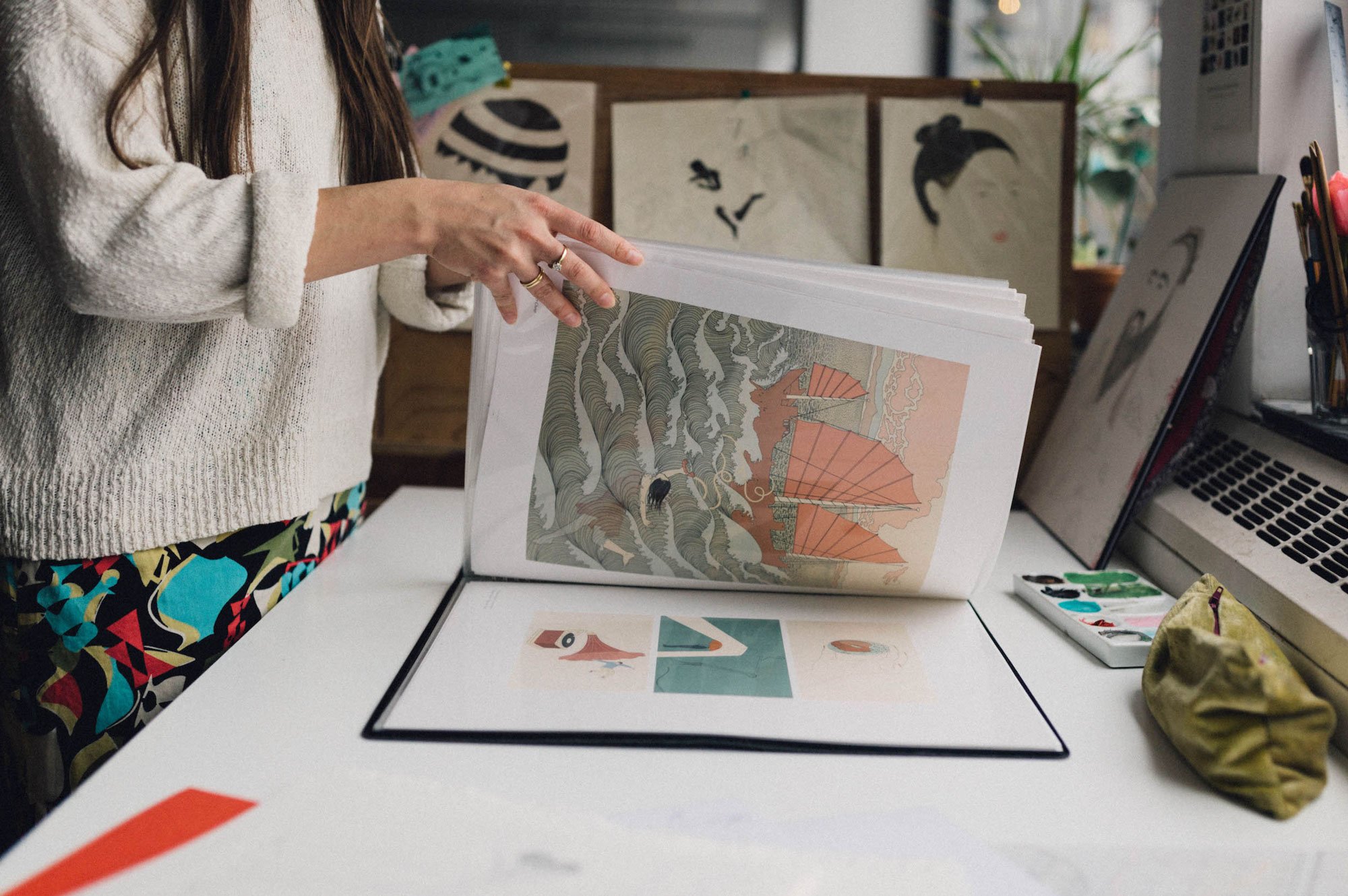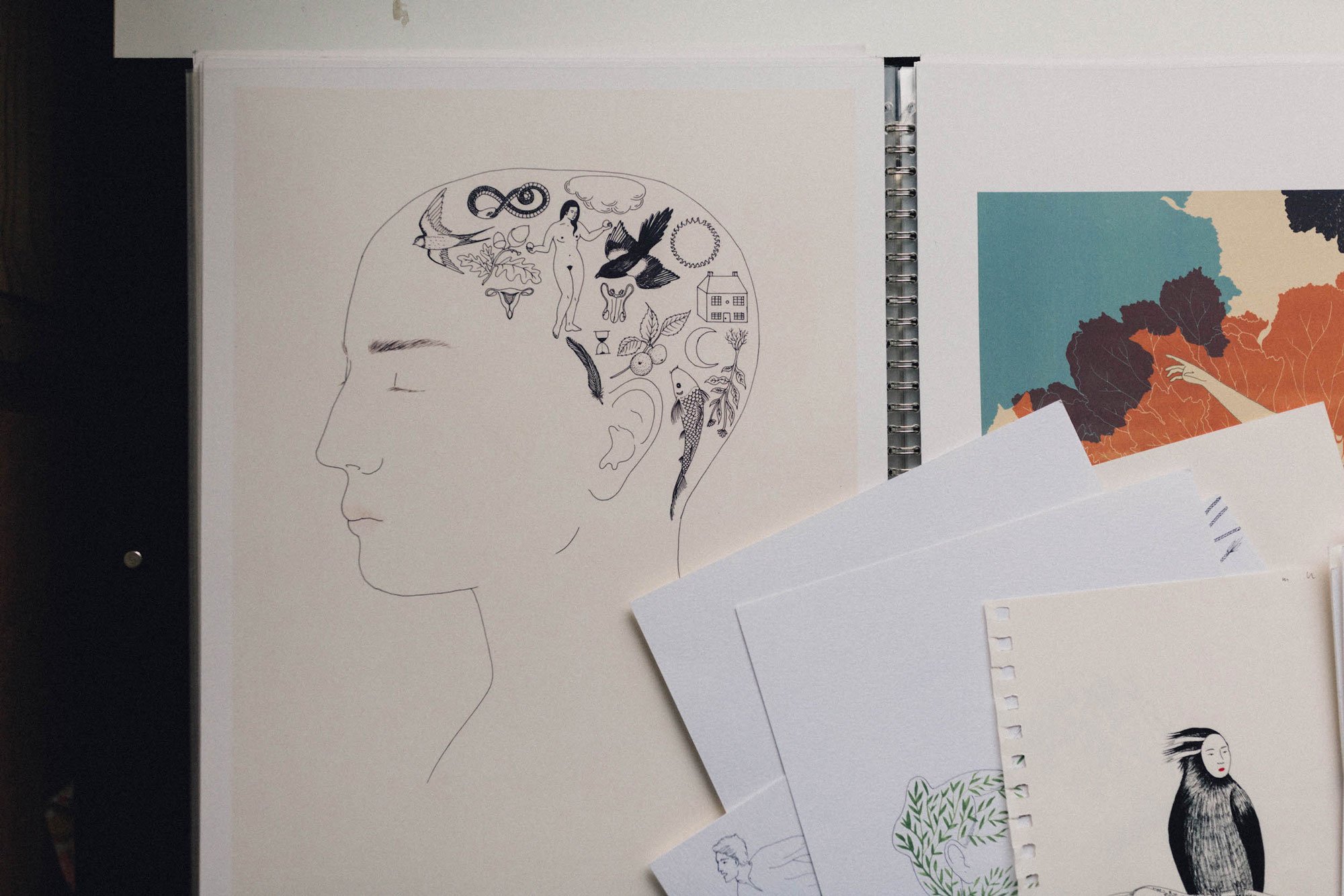How to create an illustration portfolio
An essential requirement for an illustrator is to present your artwork in a professional manner, whether that’s on your website or as printed portfolio. A requirement of being freelance is to share your illustrations widely in order to find commissioned work. This guide is designed to help demystify the process of putting together a professional portfolio.
The ultimate aim of your portfolio is to show your best work, and let that shine through. By keeping the format simple you can allow the artworks to come to the forefront. Consider the perspective of the art director. Do your best to create a viewing experience that’s easily navigated, leaves little explaining to do, and allows your artworks to speak for themselves.
Ideally you will want to aim for around 20-40 artworks, if you’re just starting out you may have slightly less and that’s fine. Prioritise quality over quantity and leave out any thing you don’t consider to be your best work. Because if it’s in your portfolio you may be commissioned off the back of it, and end up having to create an illustration that you don’t like.
“There are three responses to a piece of design—yes, no, and WOW! Wow is the one to aim for”
Layout Tips
- Simplicity is key
- Include a brief artist bio about yourself
- White or neutral background
- Format portrait artworks together & landscape artworks together
- Simple descriptions (e.g client, title)
- 20-40 artworks (choose quality over quantity)
Piecing together your portfolio can be an illuminating process, allowing you the chance to reflect on the body of work that you’ve created over a period of time. You may start to notice themes or topics emerging as a result of viewing the work as a whole, which can be incredibly beneficial to help define the trajectory of your career path. You may want to ask yourself what contexts would you love to find work in, if you haven’t already?
It may sounds obvious but in order to find work in the sectors you desire, it’s helpful to include examples within your portfolio. For example if you would love to be commissioned to illustrate a children’s book, but have no demonstrative artwork in your portfolio then you’re less likely to be considered for that sort of thing. In most cases art directors are risk averse when it comes to commissioning, due to limited time frames and budget. Whether you're starting out or are an already established professional, the solution is to create examples through personal projects. This is a fail safe method to design a portfolio that reflects your personality, and should hopefully ensure that you attract like minded organisations to commission you on projects that you feel passionate about.
“The real issue is not talent as an independent element, but talent in relationship to will, desire, and persistence. Talent without these things vanishes and even modest talent with those characteristics grows.”
Casing, Website & Social Media
If you’re putting together a printed portfolio, you may want to consider a high quality casing with sleeves to store your work in, around A4 or A3 size. Books and magazines are nearer to these measurements, so size is relevant. Portfolio’s of gigantic proportions can be difficult to carry, and if you go any smaller and you may not be able to see the details in your designs. The brands I have used in the past are Artcare, Panodia.
You may want to consider making a design pack featuring your logo, chosen fonts, and colour scheme. This can enable aesthetic cohesion and continuity across your printed portfolio, website, and social media. Social media can be a great place to share works-in-progress and act as an informal representation of yourself and your work. In order to be found, you must be findable and social media is a vital tool to get your work out there.
If you’d like a bit more information about sharing your work online, self-promotion, how to approach art directors and what to expect at a portfolio review, you can watch a webinar I made on those topics here. As well as that you can also access a helpful downloadable checklist. I hope you found this useful!



